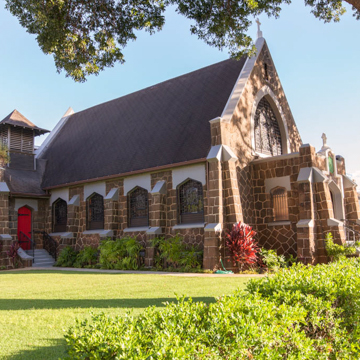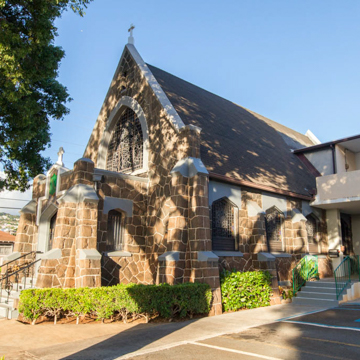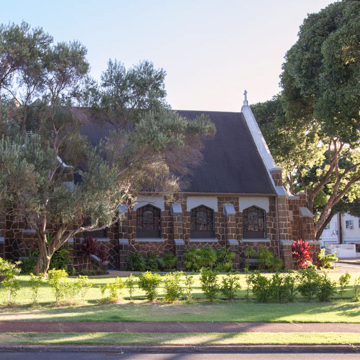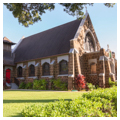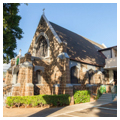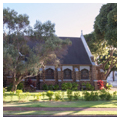A splendid little composition, this stone structure epitomizes for Hawaii the English country church tradition. An exercise in Academic Gothic with Craftsman overtones, its buttresses, Gothic- and Tudor-arched openings, and steep gable roof meld softly with the basalt walls and open belfry (added in 1922). The lava rock for the walls was gathered from the site.
The interior continues the exterior's theme, with an articulated framework, scissors-trussed ceiling, and semi-octagonal chancel. Two stained glass windows (1928) are by Clayton and Bell of London, whose windows also appear in St. Andrew's Cathedral (OA44) and the YWCA (OA48). The more recent stained glass windows, with their Hawaiian allusions, were fabricated by renowned local artist Erica Karawina and were installed in 1967 and 1974. They replaced earlier diamond-paned casement windows. The koa altar was made by students at Iolani School under the direction of the school's principal, Reverend F. A. Saylor. The church was organized in 1911 under Saylor, a reflection of the growing population of suburban Kaimuki, which had been platted in 1899.


